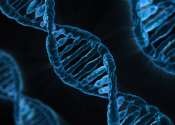Gene editing system restores dystrophin function in stem cells from patients with Duchenne muscular dystrophy
Duchenne muscular dystrophy (DMD) is a muscle degeneration disorder caused by mutations affecting the dystrophin gene. On August 24 in the journal Stem Cell Reports, researchers show how a dual CRISPR RNA method restored ...
Aug 24, 2023
0
164









